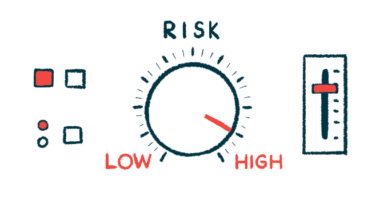Greater On-the-job Exposure to Pesticides Linked to Higher COPD Risk

Being exposed to pesticides at work increases the risk of developing chronic obstructive pulmonary disease (COPD), a large U.K.-based study has found.
This was true regardless of whether people smoked or had asthma; smoking and asthma are both known risk factors for COPD.
“Focused preventive strategies for workers exposed to pesticides can prevent the associated COPD burden,” the researchers wrote.
The study, “Lifetime occupational exposures and chronic obstructive pulmonary disease risk in the UK Biobank cohort,” which was conducted by an international team of researchers, was published in the journal Thorax.
While the most common risk factor for COPD is cigarette smoking, not all smokers develop the disease. Other factors also may play a role, such as on-the-job exposure to toxic substances, which is considered an important preventable cause of COPD.
“It has been recently estimated that about 14% of all cases are work-related,” the researchers wrote.
It can be difficult to determine which jobs and exposures are more likely to cause COPD because this would call for studies with large numbers of people and complete job histories. To overcome these limitations, the researchers drew on data from the U.K. Biobank, a large database that collected health and lifestyle information from half a million people in the U.K. between 2006 and 2010.
In their previous study, the researchers found that gardeners, groundsmen, park keepers, and people with agriculture and fishing jobs were among those who had the highest risk of developing COPD. They noted that pesticides were a common feature across many of these occupations.
“We hypothesized that pesticide exposure could be one of the potential causal factors,” they wrote.
For the new study, they invited a random sample of adults, ages 40–69 years, from the National Health Service. Their personal data, including age, sex, smoking history, current job, and doctor-diagnosed asthma, were collected.
Their lifetime job histories were collected using OSCAR, a web-based tool that is used to automatically code paid jobs that lasted six months or longer. The level of exposure to 12 categories of potentially harmful agents was rated from zero (no exposure) to one (low) or two (high).
These categories included biological dusts, mineral dusts, gases and fumes, herbicides, insecticides, fungicides, aromatic solvents, chlorinated solvents, other solvents, and metals, plus two composites of the above (all pesticides and vapors, gases, dusts, and fumes).
Physical health tests, including spirometry, were performed. Spirometry is used to diagnose COPD and evaluates how well the lungs are working by measuring how much — and how fast — air can be breathed in and out.
Of the 116, 375 people with complete job histories, 94,514 had good-quality spirometry and smoking data and were included in the analysis. Their mean age was 55.9 years.
Approximately half (55.8%) of the participants were women. Most (58.8%) had never smoked and 5,298 (5.6%) were current smokers.
A total of 10,511 (11.1%) had a diagnosis of asthma. The number of people with COPD, diagnosed based on spirometry data, was 7,603 (8.0%). Its prevalence was higher among current smokers (16.8%) than among former smokers (8.6%) or those who had never smoked (6.9%).
When researchers looked at the percentage of people who had been exposed to pesticides, they found that it was 4.2% among those with COPD and 3.5% among those without the disease. Nearly half of those with COPD (47.6%) and without (46.9%) had been exposed to any of vapors, gases, dusts, and fumes.
“Of note, most subjects had been exposed to only low levels of exposure in their lifetime job career,” the researchers wrote.
After accounting for some factors, the researchers found that exposure to pesticides at any time was linked to a 13% higher risk of COPD. Cumulative exposure, which takes into account how long and intense the exposure was, was linked to a 32% higher risk of COPD.
Moreover, higher cumulative exposure to pesticides was associated with a greater chance of developing COPD. These findings were confirmed among people who had never smoked and in those without a diagnosis of asthma.
“In conclusion, investigating the lifetime job histories of about 100,000 individuals from a general population, we found that cumulative exposure to pesticides is associated with an increased risk of COPD,” the researchers wrote.
“Future studies focused on evaluating the effect of specific types of pesticides on chronic airway obstruction are warranted in order to inform focused workplace preventive strategies and avoid the associated COPD burden,” they added.







